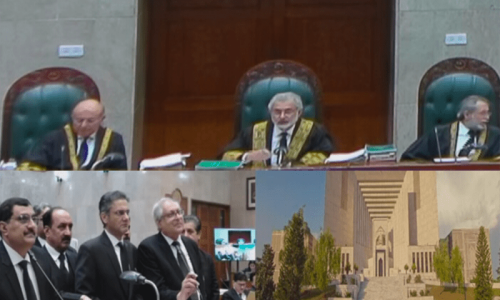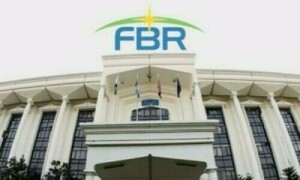APPARENTLY not satisfied with the Islamabad police’s investigation of the 2007 Lal Masjid stand-off, the Supreme Court on Tuesday ordered the formation of a one-man commission to probe the episode, in response to complaints filed by the heirs of those missing since the operation. A police official told the court that nearly all the 103 ‘missing’ persons had been killed and that the majority of them comprised militants; only 16 people remained unidentified. The official also denied that any women students of Jamia Hafsa, the women’s seminary attached to Lal Masjid, were killed in the operation.
While this gory episode must be investigated, the probe should cover all aspects — the details of the dead and missing as well as the events that led to the battle between the state and the militants holed up inside the mosque. There is no doubt that brute force was used to crush the militants, and one indication of this is that there were no survivors after the operation. Why was this level of force necessary? Was it intentional? On the other hand, the Lal Masjid forces, led by Abdul Rashid Ghazi, who was killed in the hostilities, had rebelled against the Pakistani state. Before the stand-off began in July 2007 a Sharia ‘court’ had been set up in the mosque while the Jamia Hafsa students launched a violent campaign of intimidation in the capital to enforce their rigid brand of religion. The Lal Masjid elements had also occupied government buildings and attacked security men and had openly displayed sophisticated weapons before the assault.
So while the commission needs to look into how many people were killed and who gave the orders for the crackdown, it must also examine how a mosque was turned into a militant hub in the heart of Islamabad, and how the security establishment failed to detect the stockpiling of heavy weapons in its backyard. In short, along with the government’s handling of the episode, the Lal Masjid phenomenon itself must also be examined. Knowing the names and identities of the dead is important. Maulvi Abdul Aziz, Lal Masjid’s head cleric, and others have been claiming that ‘hundreds’, mostly women, were killed in the assault. An investigation would go a long way in clarifying matters. The commission should also investigate if women were used as human shields by militants. As for the argument that the state defiled a mosque, it should be recalled that similar action was taken by the Saudi government, with sanction from the ulema, in 1979 when zealots stormed the Grand Mosque of Makkah — Islam’s holiest site.










































